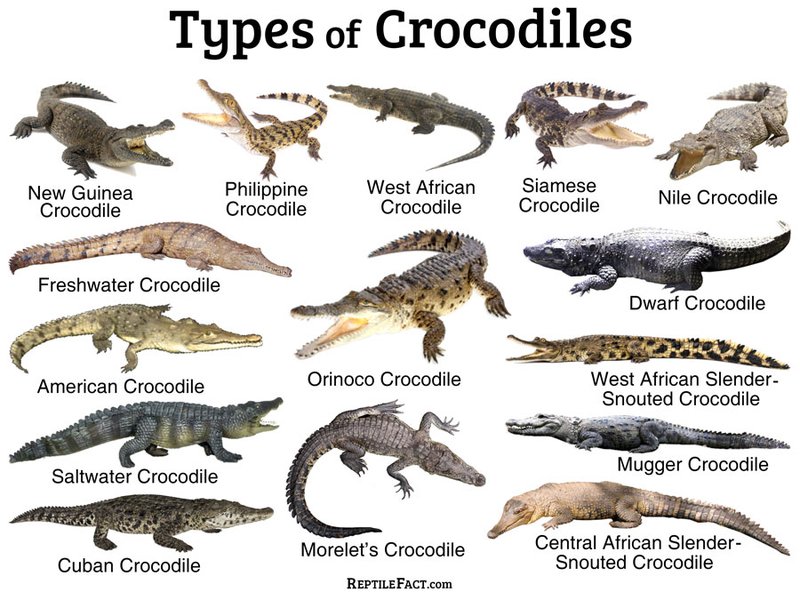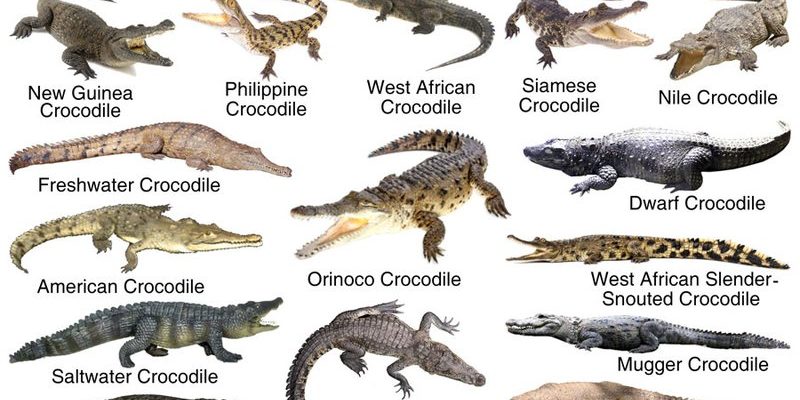
Understanding these creatures not only satisfies curiosity but also gives us insight into their habitats and behaviors. Like salty snacks by the ocean, there’s a whole world of reptiles, amphibians, and even mammals that connect to the crocodile family tree. So, let’s unpack this intriguing topic and see what makes these animals similar—and how to tell them apart.
1. American Crocodile
The American crocodile shares a lot of similarities with the saltwater crocodile, including its elongated snout and tough, scaly skin. Both species primarily inhabit coastal regions, but there are some important differences. For one, the American crocodile tends to have a lighter coloration, often appearing olive brown, which helps it blend in with the mangroves and riverbanks of its habitat.
A key way to tell them apart is by their size. The saltwater crocodile can grow to be one of the largest reptiles, reaching up to 23 feet in length, while the American crocodile usually maxes out around 15 feet. So, if you ever spot a croc, and it seems massive, you might just be looking at a saltwater crocodile!
2. Nile Crocodile
The Nile crocodile brings its own flair to the croc family. Found throughout Africa, this species is known for its adaptability to freshwater environments like rivers and lakes. In terms of appearance, Nile crocodiles are similar in size to saltwater crocodiles, but they often have a more rugged, textured skin and a broader snout.
One distinct feature is the pattern of their teeth. When the mouth of a Nile crocodile is closed, you can see that the fourth tooth in the lower jaw fits neatly into a notch in the upper jaw, a trait that’s less pronounced in saltwater crocs. This little detail, though it seems minor, can be a useful identifier.
3. Morelet’s Crocodile
If you head to Central America, you might encounter the Morelet’s crocodile. This smaller species, usually not exceeding 10 feet in length, has a more rounded snout compared to the saltwater crocodile. Their skin is also generally darker and features distinct patterns, which help them camouflage in the murky waters.
What’s remarkable about Morelet’s crocodiles is their preference for freshwater habitats like lakes and rivers, unlike the saltwater crocodile, which thrives in brackish and marine environments. So if you come across a croc in freshwater regions, it’s likely a Morelet’s!
4. Orinoco Crocodile
The Orinoco crocodile is another fascinating relative and is one of the most endangered species of crocodiles. Found mainly in the Orinoco River basin in Venezuela and Colombia, this crocodile can grow up to 16 feet but is usually much smaller.
The distinguishing factor here is their distinctive coloration—Orinoco crocodiles often have a lighter, sandy hue, which makes them stand out. They also have a more elongated snout, unlike the robust head of the saltwater crocodile. If you’re in the Amazonian region and spot a croc with a slender head, keep in mind you might be looking at an Orinoco.
5. Cuban Crocodile
The Cuban crocodile is unique in both behavior and appearance. Smaller than saltwater crocodiles, they typically reach about 10 feet. What sets them apart is their bright greenish coloration and a more pronounced “sawtooth” jawline, which is quite different from the more uniform structure of saltwater crocs.
They’re known for their agile movements and can often be found basking on land, unlike the more aquatic habits of their larger cousin. So, if you ever find yourself in Cuba and see a crocodile sunbathing with a vibrant green tinge, it’s likely a Cuban croc!
6. Freshwater Crocodile
The freshwater crocodile, also known as the Australian freshwater croc, is a much smaller and more timid cousin. Usually maxing out around 10 feet, these crocodiles have a narrower snout and a lighter color pattern, making them quite different from the robust saltwater crocodile.
A notable behavioral difference is their diet. Freshwater crocodiles primarily feed on fish and smaller aquatic animals, while saltwater crocodiles have a much broader diet, which can include larger prey. If you’re enjoying a swim in northern Australia and spot a less aggressive croc, it’s likely a freshwater crocodile.
7. Gharial
While many crocodilians have a robust build, the gharial is quite the opposite. Known for its long, thin snout, the gharial is designed for catching fish rather than tackling larger prey. This unique feature makes it stand out among its relatives, including the saltwater croc.
Gharials are primarily found in riverine habitats in India and Nepal, thriving in freshwater rather than salty environments. The male gharial has a distinctive rounded growth on its snout, which doesn’t appear in saltwater crocodiles. If you see a crocodilian with a slender silhouette and long jaws, it’s a gharial!
8. Caiman
You might think of caimans as distant cousins of crocodiles, and you’d be right. They have many similarities, including body shape and habitat preferences. However, there are several key differences. For instance, caimans are generally smaller, with the largest species, the black caiman, reaching around 16 feet, while others stay much smaller.
Caimans typically have a more robust body and shorter snouts compared to the long, slender snouts of the saltwater crocodile. They also have a slightly different arrangement of teeth, and their skin tends to have a different texture, making it easier to tell them apart. If you’re exploring South America and come across a smaller croc-like creature, it could very well be a caiman!
9. Komodo Dragon
Moving away from the water, let’s consider the Komodo dragon. These large lizards can grow up to 10 feet long and share some physical characteristics with crocodiles, like tough skin and sharp teeth. However, they are entirely different in behavior and habitat, mainly found on a few Indonesian islands.
Komodo dragons are terrestrial animals, unlike the semi-aquatic lifestyle of saltwater crocodiles. They have a more muscular build and a distinctive forked tongue, which they use to smell their surroundings. If you’re on an island and spot a lizard the size of a person, it’s likely a Komodo dragon rather than a croc!
10. Monitor Lizard
Lastly, let’s talk about monitor lizards. These creatures vary in size, but some species, like the Asian water monitor, can grow quite large and resemble a crocodile from a distance. They usually have a long, muscular body and a pointed snout, setting them apart from the bulkier saltwater crocodile.
While both monitor lizards and crocodiles share habitats, monitors tend to be more agile on land and are generally less aggressive. If you see a large lizard basking on a rock near the water, take a closer look—if the snout is pointed and the body is slimmer, you’re probably looking at a monitor lizard!
In summary, while the saltwater crocodile is a marvel of nature, it’s just one of many fascinating reptiles out there. By understanding the differences between these animals, you can appreciate their unique adaptations and roles in their ecosystems. Whether it’s through their physical traits, habitats, or behaviors, each animal tells a different story in the grand narrative of wildlife. So, the next time you find yourself near a body of water, take a moment to consider the incredible creatures that might be lurking just beneath the surface.

